
Mantidae is one of the largest families in the order of praying mantises, based on the type species Mantis religiosa; however, most genera are tropical or subtropical. Historically, this was the only family in the order, and many references still use the term "mantid" to refer to any mantis. Technically, however, "mantid" refers only to members of the family Mantidae, and not the 14 remaining families of mantises. Some of the most recent classifications have promoted a number of the mantid subfamilies to the rank of family, e.g. Iridopterygidae, Sibyllidae, Tarachodidae, Thespidae, and Toxoderidae, while other classifications have reduced the number of subfamilies without elevating them to higher rank.

Hymenopodidae is a family of the order Mantodea (mantises), which contains six subfamilies. Some of the species in this family mimic flowers and are found camouflaged among them; these are called flower mantises. Their coloration is aggressive mimicry, luring prey to approach close enough to be seized and eaten.

Tenodera is a genus of mantis in the family Mantidae which contains several species of praying mantises. The species in this genus can be found primarily in Africa, Asia and Australia, but also North America.

Hymenopodinae is a subfamily of the mantis family Hymenopodidae that includes several species of flower mantises.

Acromantinae is a subfamily of the mantis family Hymenopodidae which contains two tribes and about 13 genera.
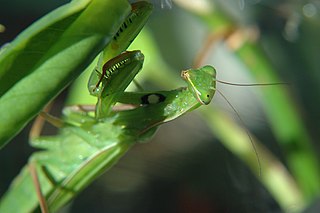
The genus Mantis is in the family Mantidae, of the mantis order Mantodea.

Rhombodera is a genus of praying mantises native to Asia and possessing common names such as shield mantis, hood mantis, and leaf mantis because of their extended, leaf-like thoraxes.

Acanthops is a genus of mantises in the family Acanthopidae, containing 20 species that can be found in Central and South America.
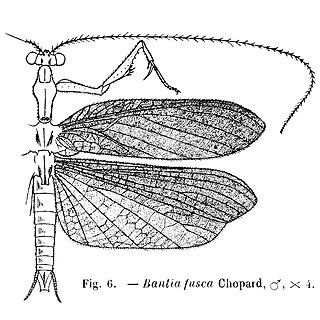
Thespidae is a family of insects in the order Mantodea. Following a major revision of this order in 2019, the old-world subfamilies Haaniinae and Hoplocoryphinae, previously placed here, have been upgraded to family level. Many genera are Neotropical, but the Thespinae are represented in Africa, Asia, Europe, and North America.
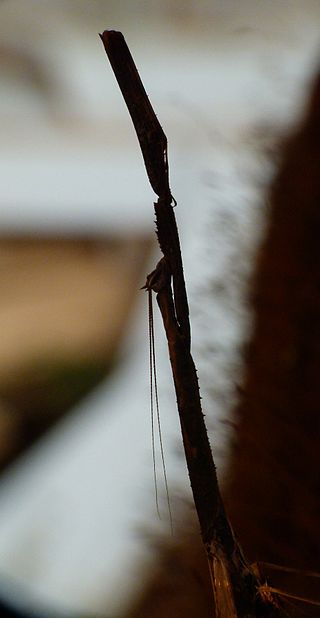
Toxoderidae is a family of praying mantises.

Acanthopidae is a family of South American mantises consisting of 16 genera in the order Mantodea. The group was first formally split off as a separate family by the German entomologist Reinhard Ehrmann in 2002. In 2016, five genera were moved from Acanthopidae to the newly created family Acontistidae, but this has not been accepted in most recent classifications.
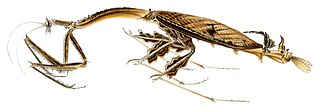
Toxodera is the type genus of mantises in the family Toxoderidae, known for their stick mimicry. There are four confirmed species in Borneo restricted to old-growth forests, and are considered to be rare. Species of the South-East Asian Toxoderini inhabit beneath the forest canopy. Not much is known regarding their ecology. Males however, are often attracted to lights. One species, Toxodera maxima, can reach 18 cm in total length.
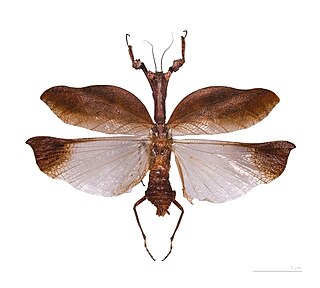
Acanthopini is a tribe of mantises in the family Acanthopidae. Ii is the only tribe in the subfamily Acanthopinae and contains eight genera and 37 species.

Acromantini is a tribe of mantis in the family Hymenopodidae, which contains 9 genera and 35 species:
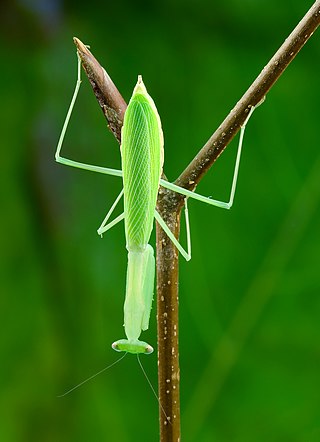
Miomantidae is a family of praying mantises in the order Mantodea.

Statilia is a genus of praying mantis that resembles dead or living grass. Statilia species live in Australia, Africa, Asia and islands.
Thespinae is a subfamily of mantises in the family Thespidae. There are 16 genera and at least 40 described species: found in most continents.
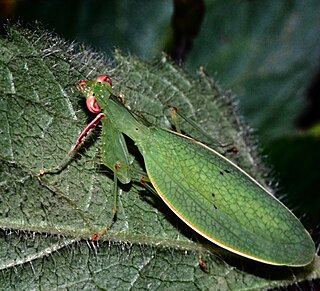
The Nanomantidae are a new (2019) family of praying mantises, based on the type genus Nanomantis. As part of a major revision of mantid taxonomy, genera and tribes have been moved here, substantially replacing the old family Iridopterygidae.
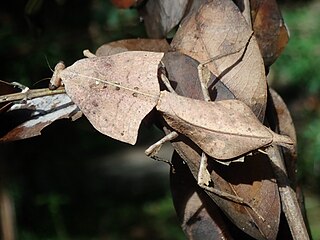
The Deroplatyidae are a new (2019) family of praying mantises, based on the type genus Deroplatys. As part of a major revision of mantis taxonomy, the subfamily Deroplatyinae has been moved here from the previously structured family Mantidae.


















